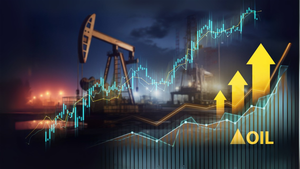Financial News
Geopolitical Swings: European Shares React to Trump-Putin Meeting Hopes and White House Pushback

The intricate dance of international diplomacy and its immediate reverberations across global financial markets was on full display recently, as European shares initially surged on the prospect of a high-stakes meeting between then-US President Donald Trump and Russian President Vladimir Putin. This initial bullish sentiment, fueled by hopes of de-escalation in the ongoing conflict in Ukraine, quickly faced a reality check as the White House introduced conditions and maintained a firm stance on sanctions, leading to a more cautious and mixed market response.
This episode underscores the profound sensitivity of financial markets to geopolitical developments, particularly those involving major global powers. The ebb and flow of diplomatic rhetoric and policy actions can trigger significant shifts in investor confidence, influencing everything from major indices to the valuations of individual companies with exposure to the affected regions.
Diplomatic Overtures and Market Volatility
The initial reports of a potential meeting between President Trump and President Putin, particularly concerning a possible ceasefire in Ukraine, ignited a wave of optimism across European equity markets. The pan-European Stoxx 600 index saw a notable gain of 0.9%, while the blue-chip Stoxx 50 index jumped by almost 1.4%. German stocks, often seen as a bellwether for European economic health, led this advance. The Irish Iseq index also rose by almost 1%, primarily driven by bank stocks. This positive sentiment was largely attributed to the renewed hopes for a diplomatic resolution to the conflict, suggesting that a high-level meeting could significantly de-escalate geopolitical tensions and foster greater stability in the region.
However, this initial enthusiasm was quickly tempered by subsequent clarifications and pushback from the White House. While the Kremlin confirmed that a meeting was agreed upon "at the suggestion of the American side," a White House official stated that any such meeting would hinge on Putin also agreeing to meet with Ukrainian President Volodymyr Zelenskyy. This condition, reportedly not discussed with the Kremlin, introduced a layer of complexity and uncertainty. Crucially, despite the diplomatic overtures, the White House press secretary confirmed that fresh secondary sanctions targeting buyers of Russian oil would still take effect, including a 100% tariff on countries continuing to import Russian crude. This firm stance on punitive measures, even amidst talks, indicated that the US was not softening its economic pressures. This pushback and the continued threat of sanctions created a more mixed reaction in the broader markets. While some European indices initially rose, the overall sentiment became less uniformly positive as the complexities and conditions of the proposed meeting, along with the ongoing sanctions, became clearer. Global equities and major Wall Street indexes, for instance, fell on a day when European stocks closed up, and oil prices turned down after the Kremlin's announcement, suggesting a nuanced reaction to the full scope of the news. The dollar also slid, and gold prices, typically a safe haven, climbed, suggesting lingering uncertainty and low expectations for a meaningful outcome from the meetings despite the initial "progress" touted by Trump.
Winners and Losers in a Geopolitical Chess Game
The fluctuating prospects of a Trump-Putin meeting, coupled with the White House's firm stance on sanctions, created a distinct set of potential winners and losers in the financial markets.
On the "winner" side, had a genuine de-escalation occurred, Russian energy companies like Rosneft (MCX: ROSN) would have been significant beneficiaries. A relaxation of sanctions would grant them greater access to international markets, financing, and technology, alleviating pressures from discounted sales and non-dollar settlements. Similarly, European energy importers, historically reliant on Russian supplies, would have benefited from more stable and potentially cheaper energy, reducing their need for more expensive alternatives. Companies in sanctioned sectors, such as Russian financial institutions, defense, and technology firms, would also have seen increased profitability and growth by re-engaging with the global financial system.
However, the reality of continued White House pushback and the imposition of tariffs created more "losers." Indian oil importers and exporters faced significant tariffs from the US, with threats of up to 500% tariffs on Indian exports to the US due to their continued purchases of discounted Russian oil. This directly impacts Indian companies involved in exporting goods to the US and those reliant on Russian oil. The Federation of Indian Export Organizations noted that these tariffs would affect nearly 55% of India's outbound shipments to America. US households and consumers also bore the brunt, as tariffs imposed by the US on various countries, including those related to Russia policy, were estimated to cost American households an average of $2,400 per year and contribute to inflationary pressures. Companies importing goods from sanctioned or tariff-hit countries often pass these costs onto consumers. The US trade and logistics sectors also suffered, with increased tariffs and trade tensions leading to a slowdown in trade and impacting jobs. For example, the Port of Los Angeles operated at 70% capacity due to tariffs. Furthermore, US and international companies operating in Russia or with significant Russian ties faced severe restrictions and financial penalties due to sanctions. The Trump administration did not remove or relax any US sanctions or export controls against Russia, and enforcement actions continued. The global shipping and insurance companies were also impacted by the G7's oil price cap on Russian oil, which involved withdrawing insurance from shipping companies not adhering to the cap, creating complexities and risks for the industry.
Industry Impact and Broader Implications
The market's reaction to the potential Trump-Putin meeting and subsequent White House pushback underscores the profound interconnectedness of geopolitics, trade, and global financial stability. This event fits into broader industry trends, creates ripple effects on international competitors and partners, carries significant regulatory and policy implications, and draws comparisons to historical periods of geopolitical tension.
The energy sector remains a "battleground of geopolitical strategy." While the U.S. aims to economically isolate Russia through tariffs, major buyers like India and China have continued to purchase Russian oil, leading to the emergence of a "parallel energy ecosystem" less reliant on Western markets. This defiance by key buyers suggests Russia's energy revenue remains robust. The U.S. has also increased its Liquefied Natural Gas (LNG) exports to Europe, growing by 60% in 2022 alone, and now stands as a significant competitor to Russian pipeline gas in the European market. Beyond energy, the broader trend of global trade fragmentation is evident. Trump's tariff policies have led companies to rework global sourcing, shifting manufacturing from China to countries like Vietnam, India, and Mexico, albeit with higher setup costs. This uncertainty has also contributed to a slowdown in world trade growth.
The White House's actions have created significant ripple effects. India has been particularly targeted, facing combined tariffs of up to 50% on its imports to the U.S. due to its continued purchase of Russian oil. This has strained the U.S.-India strategic partnership and could accelerate India's pivot towards China and the BRICS+ bloc. China, as the largest overall importer of Russian goods, also faces pressure. Experts suggest that Trump's actions, by alienating allies and disrupting global trade, inadvertently serve China's goal of displacing the U.S. on the world stage. For European allies, frequent tariff threats from the U.S. have made the U.S. appear unpredictable and transactional, encouraging nations to deepen regional ties and trade blocs, potentially reducing reliance on the U.S. For Russia, while sanctions and tariffs aim to reduce its oil revenues, continued purchases by India and China help sustain its economy. However, Russia's war economy is showing signs of slowing, with a significant portion of its budget allocated to military and security spending and a decline in oil revenues.
The event underscores a significant shift in U.S. trade and sanctions policy. The Trump administration escalated the use of "secondary tariffs," targeting third countries that engage in trade with sanctioned nations like Russia. This marks a dramatic, high-stakes escalation in Washington's sanctions game, with global ripple effects and diplomatic fallout. The threat of tariffs up to 100% on countries buying Russian energy signals a willingness to use economic leverage aggressively to achieve foreign policy objectives. This approach raises questions about the mechanism for enforcing new sanctions and the willingness of Washington to impose duties on major trading partners, including the European Union. The current situation draws comparisons to a "new Cold Trade War," reflecting a period of heightened economic and geopolitical competition. The deterioration of U.S.-Russia relations is described as having severe consequences, reminiscent of past periods of hostility, increasing the risk of miscalculations. A notable historical precedent for high-level U.S.-Russia meetings is the Helsinki Summit in 2018 between Trump and Putin, which was widely seen as "ill-fated."
What Comes Next
The geopolitical landscape concerning US-Russia relations is currently marked by significant tension and unpredictability, largely stemming from the ongoing conflict in Ukraine and broader strategic competition. This dynamic environment has, and will continue to have, a profound impact on financial markets, necessitating strategic adaptations from companies and nations alike.
In the short term, US-Russia geopolitical swings are likely to continue generating market volatility, particularly in energy prices and specific sectors. The Russia-Ukraine war, now in its fourth year, continues to destabilize energy prices, especially in Europe. Recent US tariff threats on countries purchasing Russian oil could further disrupt global oil flows and create price turbulence. Sanctions and trade disruptions will continue to impact corporate revenues, especially for multinational companies in technology, energy, and manufacturing sectors. Geopolitical uncertainties will likely prompt investors to favor safe-haven assets like gold and US Treasuries. While the direct impact on the US equity market from exposure to Russia or Ukraine is limited, heightened risk environments can lead to increased market volatility. There remains a possibility of de-escalation, as evidenced by recent reports of a potential meeting between US President Donald Trump and Russian President Vladimir Putin, which has led to a strengthening of the Russian rouble and a jump in Moscow stocks. Such diplomatic overtures, if successful, could temporarily ease market anxieties.
The long-term outlook suggests a continued reshaping of global economic and political alliances, with implications for trade, investment, and currency markets. The US-Russia conflict, coupled with US-China rivalry, is accelerating a shift towards a multipolar world order. Countries like China, Russia, and members of BRICS are actively pursuing de-dollarization efforts to reduce their reliance on the US dollar for international trade, which could gradually erode the dollar's supremacy. The ongoing geopolitical uncertainties and trade disputes are prompting investors to reassess their supply chain exposure and the stability of international investments, likely leading to a continued trend of supply chain diversification and "friendshoring" or "nearshoring." The US-China rivalry is also fueling economic nationalism and attempts to reduce dependence on foreign suppliers in critical technologies like semiconductors and AI, potentially leading to fragmented technological ecosystems. Investors may increasingly prioritize diversification and defensive assets, with sectors like defense, cybersecurity, and energy (particularly renewables) seeing long-term growth opportunities.
Both companies and nations will need to adapt. For companies, this means building more resilient and diversified supply chains, enhancing geopolitical risk assessment capabilities, diversifying market presence, and investing in strategic sectors. For nations, it involves multi-alignment strategies, reassessing energy security, developing credible independent defense strategies, and navigating economic nationalism. Market opportunities may emerge in defense, cybersecurity, renewable energy, and infrastructure projects funded by non-US capital. However, challenges include increased volatility, inflationary pressures, ongoing supply chain disruptions, and currency fluctuations. Several scenarios are plausible, ranging from continued confrontation and escalation, leading to sustained high volatility and further fragmentation of global trade, to limited rapprochement and transactional engagement, which could offer temporary periods of reduced volatility. Another scenario involves Russia's deeper integration with China and non-Western blocs, accelerating de-dollarization and the emergence of alternative financial mechanisms.
Conclusion
The recent geopolitical swings surrounding the potential Trump-Putin meeting and the subsequent White House pushback serve as a potent reminder of the intricate relationship between international relations and financial market stability. The initial surge in European shares, driven by hopes of de-escalation, quickly gave way to caution as the complexities of diplomacy and the unwavering commitment to sanctions became apparent. This episode highlights several key takeaways for investors and policymakers alike.
Firstly, geopolitical events, particularly those involving major global powers, can trigger immediate and significant market reactions. The prospect of peace or de-escalation can inject optimism, while continued tensions or punitive measures can quickly dampen sentiment. Secondly, the use of economic tools, such as tariffs and sanctions, as instruments of foreign policy has profound and far-reaching consequences, impacting not only targeted nations but also third-party countries and global supply chains. This creates a complex web of winners and losers, forcing companies and nations to re-evaluate their strategies and dependencies.
Moving forward, the market will continue to be shaped by the evolving dynamics of US-Russia relations and the broader geopolitical landscape. Investors should watch for any further diplomatic overtures, the enforcement and potential expansion of sanctions, and the ongoing efforts by nations to diversify their trade relationships and energy sources. The trend towards a more multipolar world, with shifting alliances and the emergence of alternative financial systems, will likely continue to influence currency markets and global investment flows. Companies must prioritize adaptability, supply chain resilience, and robust geopolitical risk management to navigate this complex and unpredictable environment. The lasting impact of these geopolitical swings will be a more fragmented yet interconnected global economy, where political considerations increasingly intertwine with economic decisions.
More News
View More





Quotes delayed at least 20 minutes.
By accessing this page, you agree to the following
Privacy Policy and Terms Of Service.



